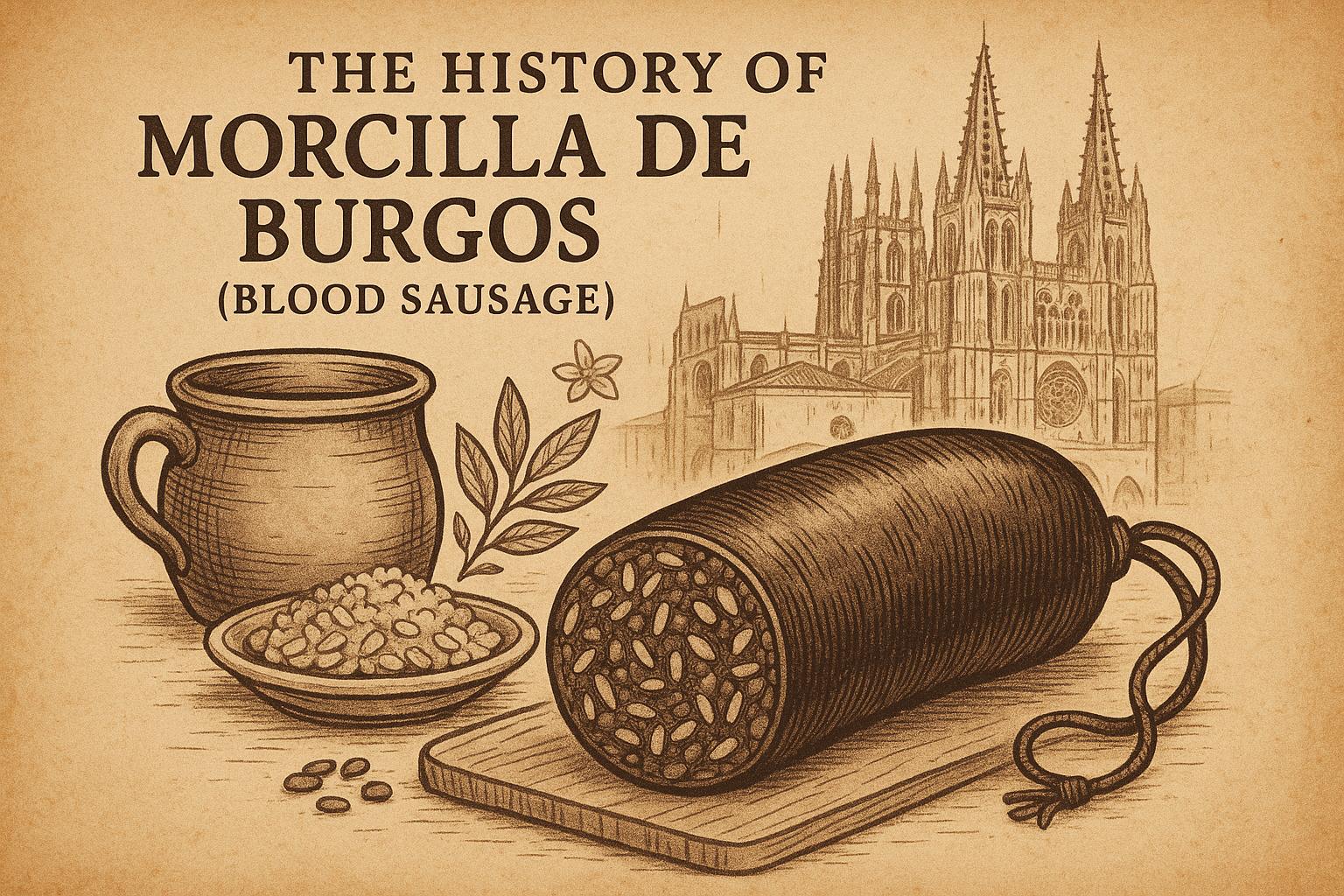
Morcilla de Burgos, a traditional Spanish blood sausage, stands as a testament to the rich culinary heritage of the Burgos region in northern Spain. With its roots deeply embedded in the local agricultural lifestyle, this unique sausage represents a time when nothing went to waste and every part of livestock was utilized efficiently. Emerging from this practical approach is morcilla, a sausage primarily crafted from pig’s blood, rice, onions, and an array of spices.
The lineage of blood sausages in Spain can be traced back to the Roman era, a testament to their long-standing presence in the culinary traditions of the region. However, the particular variant known as Morcilla de Burgos distinguished itself during the Middle Ages. It became a staple food item within rural communities, celebrated for its nutritional benefits and ability to be stored for extended periods. The sausage’s composition, utilizing ingredients readily available locally, contributed to its sustained popularity and ensured that it was handed down across generations, becoming a culinary mainstay over time.
What sets Morcilla de Burgos apart is its distinctive ingredient list and preparation methods. While many types of blood sausages across the globe incorporate bread as a binding agent, Morcilla de Burgos utilizes rice. This unique choice imparts a specific texture and flavor, distinguishing it from other varieties. Fundamental ingredients include pig’s blood, rice, onions, an assortment of spices such as paprika, and salt.
The inclusion of these ingredients not only defines the sausage’s unique taste profile but also mirrors the agricultural produce prevalent in the Burgos region. Historically, each family would develop their own recipe, a cherished family secret passed down through generations. As a result, slight flavor variations emerged between households, infusing a personal touch into the regional specialty.
Traditionally, the production of Morcilla de Burgos was intertwined with the annual pig slaughter, known locally as “matanza.” This event was a communal occasion, drawing together communities to prepare and preserve various meat products. Over time, this tradition evolved, allowing for the year-round production of morcilla by specialized manufacturers. These producers diligently adhere to traditional recipes while integrating modern food safety standards to ensure the sausages meet contemporary culinary expectations.
The detailed production process begins with the careful mixing of the specified ingredients. The mixture is then encased within natural casings, followed by cooking. This meticulous attention to detail is crucial in achieving the distinct flavor and maintaining the high culinary standards associated with this esteemed regional delicacy.
Beyond its contribution to gastronomy, Morcilla de Burgos wields significant cultural importance within the Burgos region. It is more than just a food item; it is a symbol of the regional heritage and tradition. Often featured in local festivals and events, the sausage’s role in celebrating local gastronomy cannot be overstated.
The reputation of Morcilla de Burgos has transcended its Spanish origins, gaining appreciation internationally for its singular taste and texture. This international appeal marks a new chapter in the history of this traditional dish, blending cultural preservation with global culinary exploration.
In today’s world, Morcilla de Burgos serves as both a preserved piece of cultural heritage and a coveted delicacy enjoyed in Spanish restaurants and gourmet stores around the globe. Its adaptability across various dishes, ranging from tapas to hearty stews, underscores its enduring popularity.
The sausage’s inclusion in modern cooking demonstrates its versatility and relevance, seamlessly integrating into contemporary cuisine while retaining its traditional essence. Chefs and home cooks alike have embraced morcilla for its ability to enhance both familiar and innovative dishes with its unique flavor profile.
For those intrigued by Spanish culinary traditions and the evolution of regional dishes, a deeper exploration into the history and diversity of Spanish cuisine is suggested. This journey offers insights into how Morcilla de Burgos and similar traditional dishes continue to shape cultural identities and culinary practices both within Spain and beyond its borders.
In conclusion, Morcilla de Burgos is more than just a sausage; it is a symbol of cultural continuity, adaptation, and gastronomic excellence. Its rich history, distinctive ingredients, and preparation methods combine to offer a culinary experience that is both rooted in tradition and embraced by a modern global audience. Whether savored in its homeland or abroad, Morcilla de Burgos remains a revered delicacy, adding depth and flavor to the diverse tapestry of Spanish cuisine.